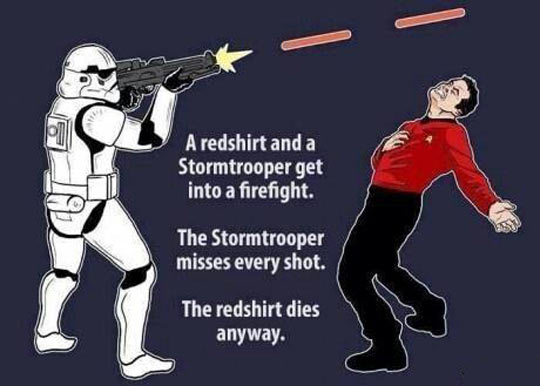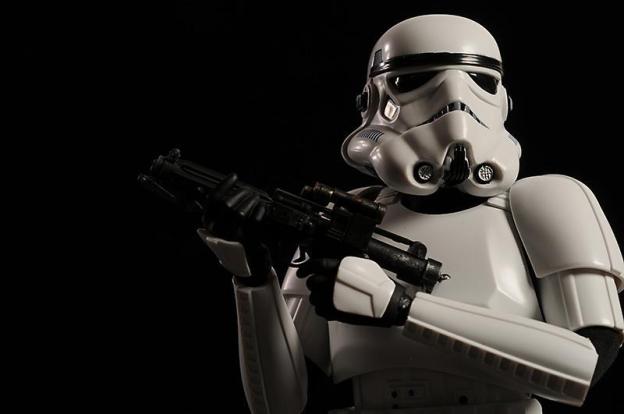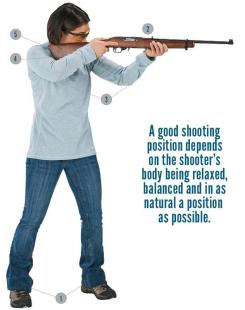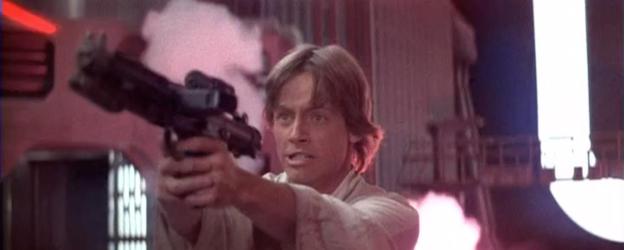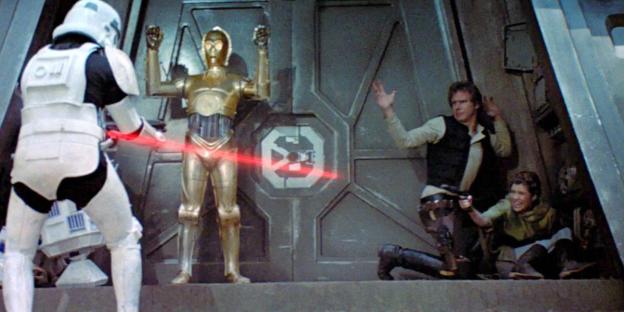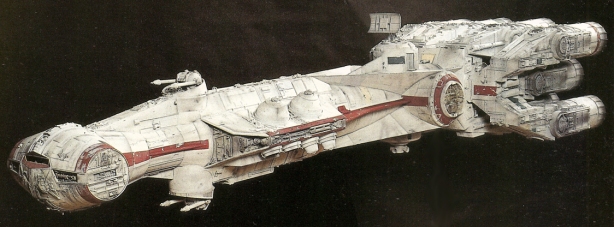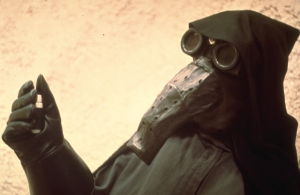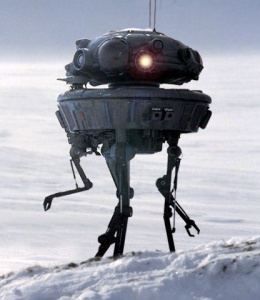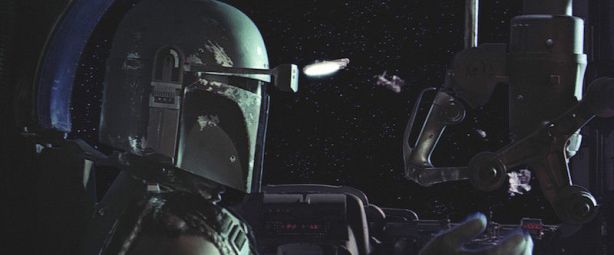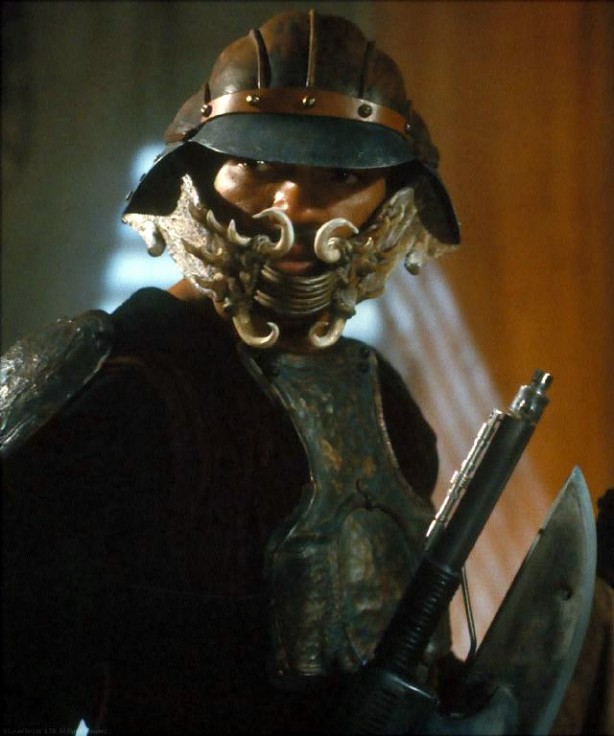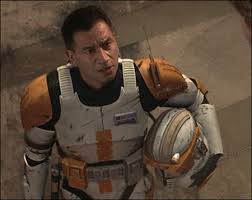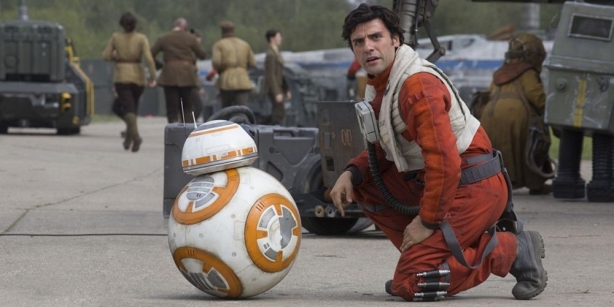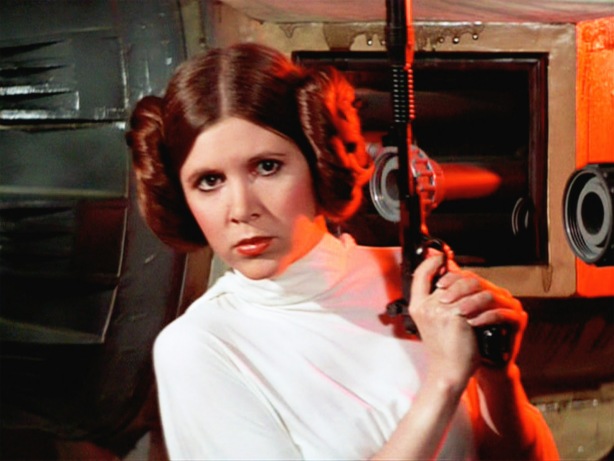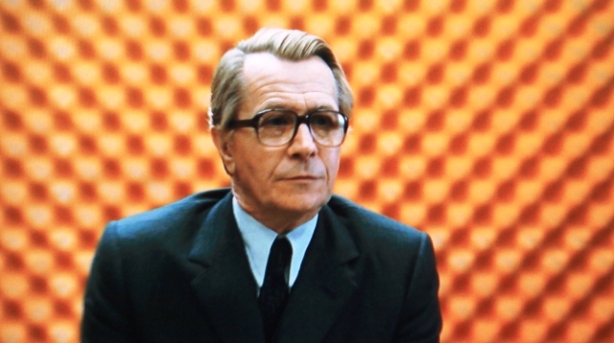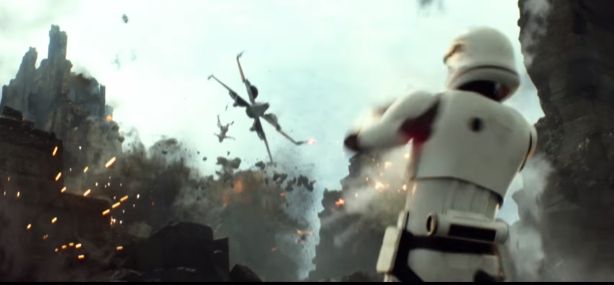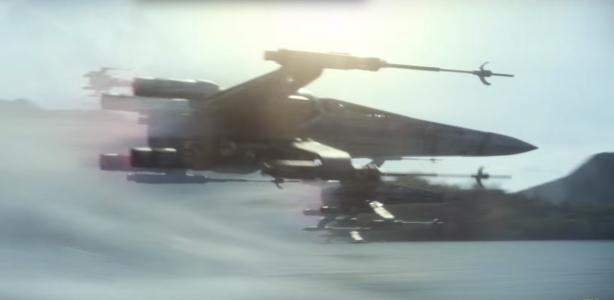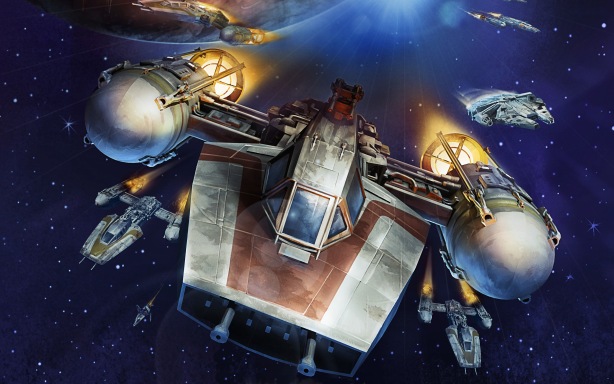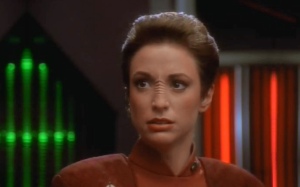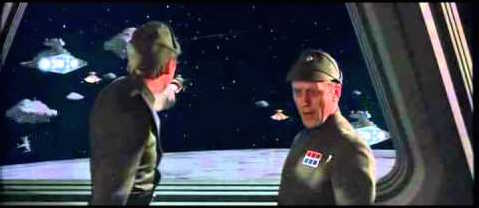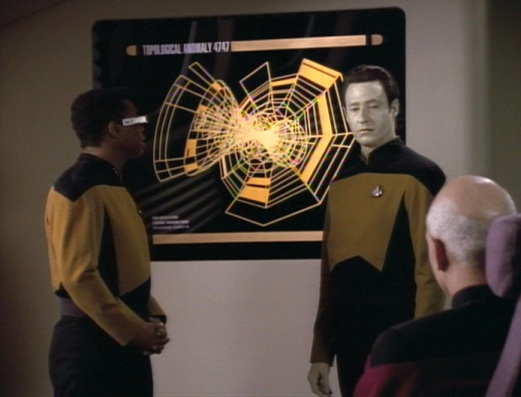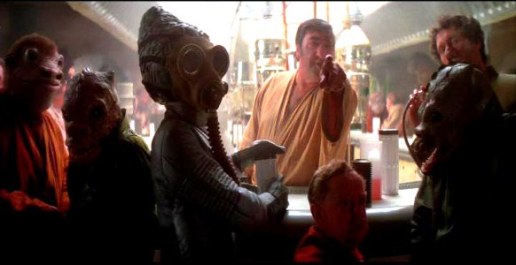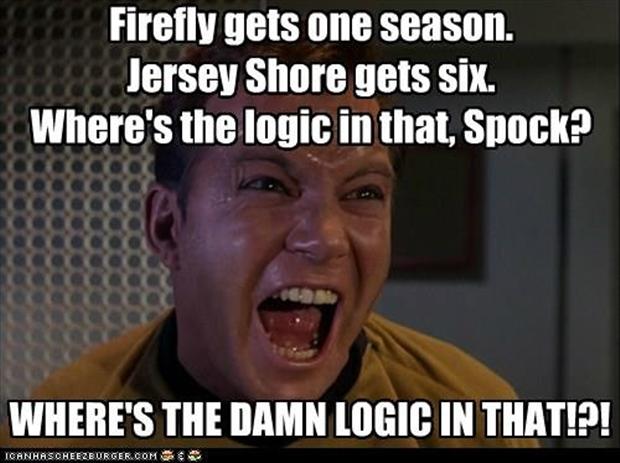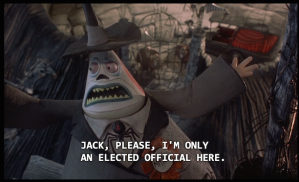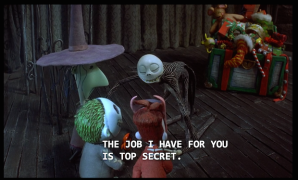The Star Wars movies have never been particularly concerned with accuracy when it comes to military tactics and strategy. From the start, the movies are designed more with aesthetics in mind. Stormtroopers are bad at shooting, Jedi are bad at war, and the Empire is bad at procurement. Take the AT-ATs; they would not be particularly useful in most terrain but damn they look cool.
But The Last Jedi took the nonsensical military tactics and cranked them up to eleven. It’s far from the worst Star Wars movie, in fact its one of the best. But I submit that when it comes to military tactics it is even worse than the Gungans against the Trade Federation droids in Episode I. That might be fine if there were just one more movie. However, there is one more movie plus an unknown number of stand-alone films plus an upcoming trilogy by Rian Johnson, the director who got military tactics so wrong.
Rian Johnson is a great director, but when it comes to military tactics he is clearly just a padawan. So, by virtue of the fact that I wrote the book on tactics and wrote a chapter in the upcoming Strategy Strikes Back book about this specific issue, I hereby appoint myself Jedi Master of esoteric military tactical pedantry. Unlike Luke, I will not fail Rian Johnson and other future Star Wars directors. As Yoda said, failure is the best teacher, so here are the tactical failures of The Last Jedi.
The Bomber Will Always Get Through
During the opening scene, the First Order is placing all its capital ships online, foregoing a fighter screen, and attempting to blast the remnants of the Resistance out of space and out of their ground base. These are simplistic tactics, but simple is good. General Hux’s assessment of the strengths and weaknesses of his own forces and those of the Resistance is sound: he’s got firepower and they don’t.
For all that firepower, though, the new Resistance strategic bombers were clearly effective, but demonstrate a classic airpower dilemma: the tradeoff between payload, speed, and maneuverability. Y-Wings and B-Wings, also bombers, are faster but would not carry the payload required to destroy a dreadnaught. Remember how little damage they did to the Starkiller Base in The Force Awakens before it was internally sabotaged. The new bombers are strategic bombers, not tactical bombers. I won’t go into the strategic logic of why a scrappy band of irregular resistance fighters needs strategic bombers because there isn’t any. Especially since General Organa’s strategic theory, “the spark that will light the flame of rebellion,” is Che Guevara’s foco theory of insurgency. Area bombing would not be a good look.
Given that the bombers were only built for payload and not for speed, Leia was wrong to pull them out when she did; they should never have been committed in the first place. Once they were, though, Poe was right to continue the attack. The fully operational dreadnought would have just shot them down at range with the cannons on the underside, and then shot down the transports. Once the bombers were committed, the high casualties were already assured and were only worth it because the dreadnought was destroyed. Casualties are inevitable, wasted lives are not.
Trading Space War for Space Time
Once the First Order fleet tracked the Resistance fleet through hyperspace, staying at sublight speed and just out of the Star Destroyers maximum effective range to buy time was about the only good call there was. It’s unclear what Poe Dameron could have done differently had he been in command. Again, the First Order made the right call by thinking about logistics and tactics; the Resistance did not have the fuel supply to escape.
However, the command team of General Organa and Vice Admiral Holdo displayed poor leadership in execution, and good tactics are nothing without good leadership. They kept the plan from Poe for no reason; he’s a Commander not a private, and he should absolutely have been involved in the staff planning. (His “demotion” to captain, a naval rank higher than commander, notwithstanding.) This in no way justifies Poe doing the same thing and sending Finn and Rose off on their own secret mission. Tactical efforts during battle are useless if they are not integrated and for staffs to integrate subordinate unit actions they have to be aware of them. The staff work at all points of the running space battle were atrocious, and playing “I have a secret” is disastrous to morale. This predictably led to infighting among the Resistance leadership and Vice Admiral Holdo’s quick thinking while in control of the last remaining Resistance capital ship and her destruction of Supreme Leader Snoke’s command vessel was the only bright spot that gave the Resistance a temporary, and pyrrhic victory.

Going Over The Top
When the Resistance manages to reach the uncharted planet Crait with its abandoned Rebellion base, the First Order again has the ability to launch an immediate attack. This is the benefit of taking logistics seriously and ensuring your forces have the mass to continually and repeatedly maintain the initiative. Here again the First Order’s tactics are simplistic, but again they have the firepower to back it up and their simple plan maximizes the effects of that firepower. The AT family of armored walkers are certainly a poor acquisition on the part of the Empire/First Order, not to mention a maintenance burden, however sometimes you have to go to star war with the ground assault vehicles you have, not the ones you’d want. If you’re stuck with AT-ATs by virtue of some retired general’s connection with the space defense industry, this is exactly how you maximize their potential.
But again, leadership again throws a kink in good tactics. Both Supreme Kylo Ren and General Hux are present on the battlefield. In fact, directly above it. Rather than maintaining a connection to the big picture of the fight, they repeatedly give in to the temptation to make tactical level decisions, modifying the plan on the fly.
The rebels did not display any tactical prowess at all in the final fight, but there was little potential for it anyway. If you’re THAT outgunned and outmanned and cornered, your tactical options are pretty well limited to a spoiling attack and a fortified defense, both of which they employed. Aiming the spoiling attack at the battering ram cannon, the First Order’s most potent weapon, was the right call based on both theory and current U.S. operational doctrine. It was the tactical center of gravity of the First Order ground forces.
The Resistance only survived this fight where they were completely outmatched in the physical realm by leveraging the mental realm, and Kylo Ren’s micromanagement enabled that. Kylo Ren made emotional decisions in the thick of battle and, because he was micromanaging the battle, those decisions were disastrous. First, he threw away his air cover by sending all of his TIE Fighters after the Millenium Falcon even though it posed no great threat to his attack. Then, Luke Skywalker was able to employ deception to distract, confuse, and deceive Kylo Ren at every turn, making him lose focus on the big picture and the tactical mission itself. This is Maneuver Warfare at its finest: attacking the enemy commander’s mind rather than his physical forces.
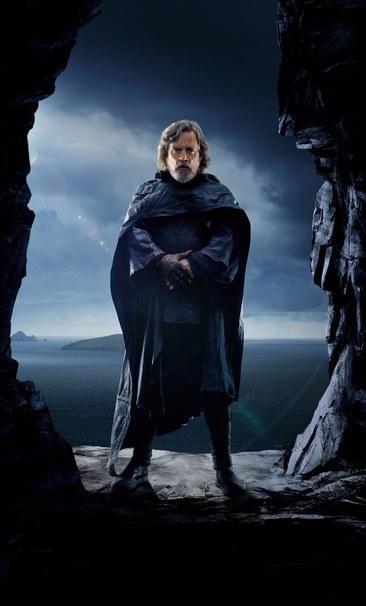
From a military tactics perspective, both sides failed. The First Order did a lot of damage, but did not accomplish their mission. The Resistance was repeatedly caught off guard, and merely escaped to keep the idea alive. These failures can both be traced to common factor for both tactical actors: there are no non-commissioned officers. A good NCO and Staff NCO corps are the executors of any military force. They translate the grandiose ideas of officers into actual, practicable plans. When it comes to the First Order and the Resistance, everyone is an officer or a faceless trooper. Captain Phasma seems to be lowest ranking leader above stormtrooper. In the Resistance, even field grade officers like Commander Dameron are kept in the dark about future plans while generals and vice admirals make every decision without input. This is no way to run a war, but it’s also unrealistic to expect a strong NCO corps with a training and education system based wholly on informal mentor/protege relationships.
These missteps may make for dramatic scenes, but after thirty years of on-again, off-again galactic civil war, it’s doubtful that so many tactical leaders would be so amateurish. What the Star Wars movies need is a military advisor, and perhaps Adam Driver knows a few potential candidates.

